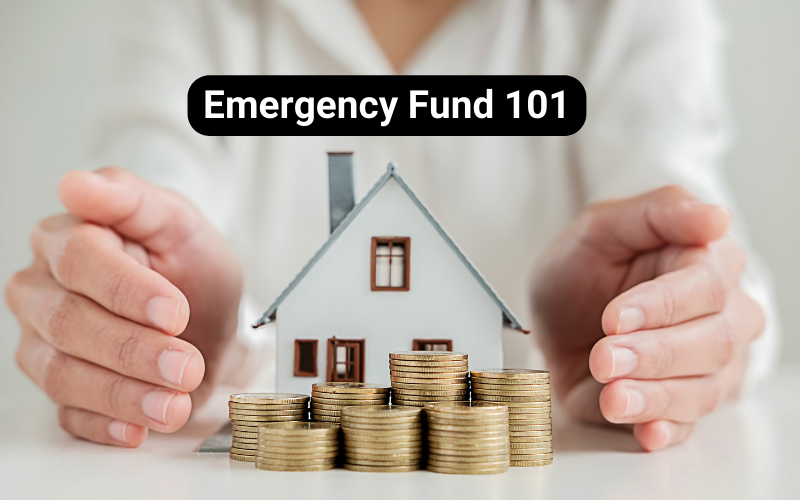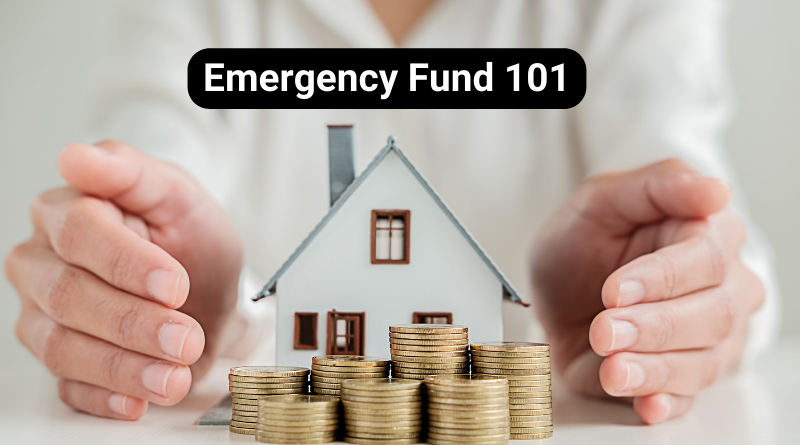Emergency Fund 101: Why Everyone Needs One and How to Build It
1. Introduction
What is an Emergency Fund?
An emergency fund is a dedicated savings account set aside to cover unexpected expenses. These can include medical emergencies, car repairs, home maintenance, or job loss. It serves as a financial safety net to protect you from falling into debt during unforeseen situations.
Why It’s Essential
Without an emergency fund, you might rely on high-interest credit cards, loans, or even borrow from friends and family during a crisis. This can lead to financial strain and stress. An emergency fund ensures that you’re financially prepared to handle life’s surprises.
Purpose of the Blog
This guide will explain why having an emergency fund is essential, how much you should save, and actionable steps to build and maintain it.

2. Why Everyone Needs an Emergency Fund
Cushion for Unexpected Expenses
Emergencies like medical bills, car breakdowns, or sudden travel needs can arise at any time. An emergency fund ensures you can cover these costs without disrupting your financial goals or dipping into your long-term savings.
Avoiding Debt
Relying on credit cards or personal loans during emergencies can lead to high-interest payments and long-term financial burdens. An emergency fund helps you avoid accumulating debt.
Peace of Mind
Knowing you’re financially prepared for unexpected events reduces stress and provides peace of mind. You can focus on resolving the issue rather than worrying about how to pay for it.
Job Loss Protection
If you lose your job, an emergency fund acts as a financial buffer, allowing you to cover your expenses while searching for new employment.
3. How Much Should You Save?
General Rule of Thumb
Financial experts recommend saving 3 to 6 months’ worth of living expenses. This amount covers essentials like rent, utilities, groceries, and transportation during emergencies.
Factors to Consider
- Dependents: Families with children or elderly dependents may need a larger fund.
- Job Stability: Freelancers or self-employed individuals should aim for closer to 6 months, while those with stable jobs may be comfortable with 3 months.
- Recurring Expenses: Include monthly bills, insurance premiums, and debt payments when calculating your target.
Starting Small
If saving several months’ worth of expenses feels overwhelming, start with an initial goal of $1,000. This foundation can cover smaller emergencies while you build toward a larger fund.
4. Steps to Build Your Emergency Fund
1. Set a Savings Goal
Calculate your total monthly expenses, including rent, utilities, groceries, transportation, and other essentials. Multiply this figure by 3-6 months to determine your target savings amount.
2. Open a Dedicated Savings Account
Keep your emergency fund separate from your regular savings or checking account to avoid accidentally spending it. Choose an account that offers easy access without penalties.
3. Start Small and Stay Consistent
Even small, regular contributions add up over time. Set aside a manageable percentage of your income, such as 10%, or commit to saving $50 from each paycheck.
4. Automate Your Savings
Set up automatic transfers from your checking account to your emergency fund. Automation ensures consistency and removes the temptation to skip contributions.
5. Cut Unnecessary Expenses
Identify non-essential spending, like dining out or unused subscriptions, and redirect that money toward your emergency fund.
6. Use Windfalls Wisely
Deposit unexpected income, such as tax refunds, bonuses, or gifts, directly into your emergency fund to accelerate your progress.
5. Where to Keep Your Emergency Fund
High-Yield Savings Accounts
These accounts offer better interest rates than standard savings accounts, allowing your money to grow while remaining easily accessible.
Money Market Accounts
Money market accounts combine the benefits of savings accounts and checking accounts, offering higher interest rates and limited check-writing capabilities.
Avoid Risky Investments
Investments like stocks or mutual funds can lose value, making them unsuitable for emergency savings. Stick to accounts that prioritize liquidity and security.
6. Maintaining and Growing Your Emergency Fund
Reassess Regularly
Review your emergency fund annually to ensure it aligns with changes in your income, expenses, or financial goals. For example, a new job with a higher salary may require a larger fund.
Replenish After Use
If you withdraw money for an emergency, prioritize rebuilding your fund as soon as possible. Treat replenishing it as a top financial goal.
Keep It Separate
Avoid the temptation to dip into your emergency fund for non-urgent expenses like vacations or shopping. Its purpose is strictly for emergencies.
7. Common Mistakes to Avoid
Not Starting at All
Waiting for the “perfect time” or a larger income can delay progress. Start saving now, even if it’s a small amount.
Underestimating Expenses
Failing to account for all monthly costs, like insurance premiums or subscriptions, can leave you unprepared for a larger emergency.
Using the Fund for Non-Emergencies
Treating the fund as extra spending money defeats its purpose. Only withdraw for genuine emergencies.
8. Tips for Staying Motivated
Track Your Progress
Monitor your savings growth using a spreadsheet or an app. Celebrate milestones, such as reaching $500, $1,000, or one month’s worth of expenses.
Visual Reminders
Create charts or use apps with visual trackers to see your progress. This can boost motivation to continue saving.
Focus on the Benefits
Remind yourself of the peace of mind and financial security your emergency fund provides. Knowing you’re prepared can keep you motivated.
9. Conclusion
Recap
An emergency fund is a vital tool for financial stability. It helps you handle unexpected expenses, avoid debt, and maintain peace of mind during tough times.
Encouragement to Start Now
Don’t wait for the “perfect time” to start saving. Even small steps today can make a significant difference in the future.
Call to Action
Set a savings goal, open a dedicated account, and start building your emergency fund today. Your future self will thank you.



